So, you want to start a fashion business? One of the first things a fashion brand should do is source fabric. However, choosing the suitable fabric for a new (or already established) clothing line can feel overwhelming, especially with many available options. Meeting the wrong supplier and asking for the right time can speed manufacturing.
But it doesn’t have to be a show-stopping process. This guide will help fashion designers navigate the ins and outs of fabric sourcing. It will break down everything they need to know, from the right place for sourcing to reliable suppliers.
Table of Contents
Understanding fabric categories before sourcing
3 things to do before sourcing fabric from a supplier
7 questions to ask potential fabric suppliers before closing the deal
In conclusion
Understanding fabric categories before sourcing
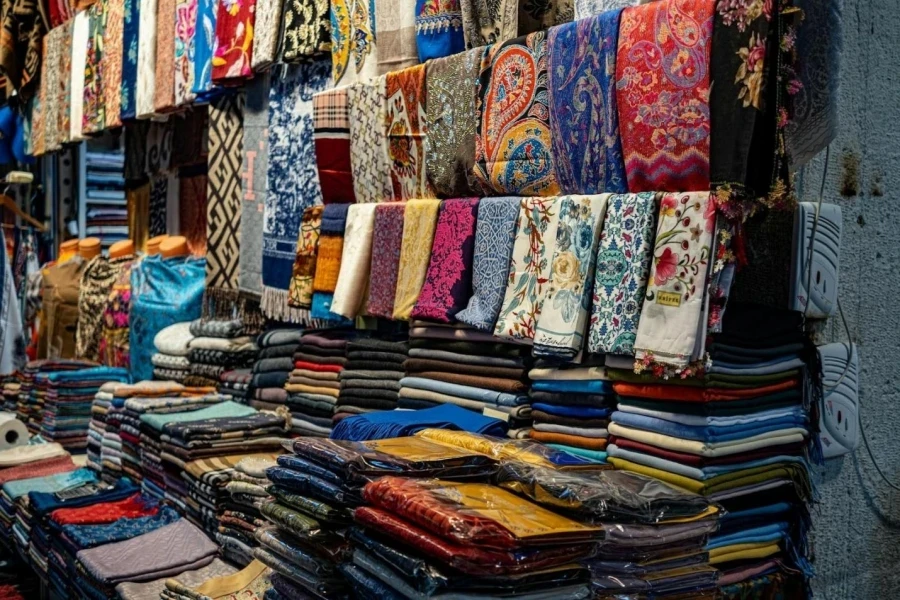
In-stock fabric
This category covers fabrics that are ready and available for purchase. These fabrics often come complete with colors, quality, and finishes, so brands can buy them without making any adjustments. While that sounds limiting, in-stock fabrics can be an excellent option for many brands in the fashion industry.
Pros of buying in-stock fabric
- This fabric is available for immediate purchase.
- Since it’s in stock, fashion brands can buy their chosen fabric again when they need to reorder. However, they must never forget to confirm continuity with the supplier.
- These fabrics typically have lower MOQs (minimum order quantities), with some suppliers allowing businesses to buy one yard.
Cons of buying in-stock fabric
- Fashion brands won’t have access to customization beyond embellishments and printing.
- Getting the exact color or quality that fashion brands need is a matter of luck.
- Other brands may purchase and use the same fabric.
Deadstock fabric
When other brands reject fabric or leave some leftovers, they become deadstock. It usually happens when the manufacturer makes more than the brand’s needs or the final product doesn’t pass quality control inspections.
Pros of buying deadstock fabric
- Deadstock fabrics are usually available for immediate purchase.
- Their limited availability can be a huge selling point.
Cons of buying deadstock fabric
- Their limited availability also means businesses won’t be able to buy more when it’s out of stock.
- Deadstock fabrics may have poor quality.
Greige goods
Unlike in-stock fabric, greige goods are raw (unbleached and undyed) and ready for custom treatments, colors, and finishes. Typically, businesses will buy large quantities from a fabric mill and customize smaller cuts to meet their demands.
Pros of greige goods
- Greige fabrics are fully customizable with treatments, colors, and finishes.
Cons of buying greige goods
- Greige goods often demand large minimum order quantities.
- Businesses can’t buy and dye/finish the fabric from the same source.
- If they can’t process everything, brands must store the leftover fabric to prevent it from deteriorating.
- Greige goods also have extended lead times.
3 things to do before sourcing fabric from a supplier
1. Understand fabric requirements
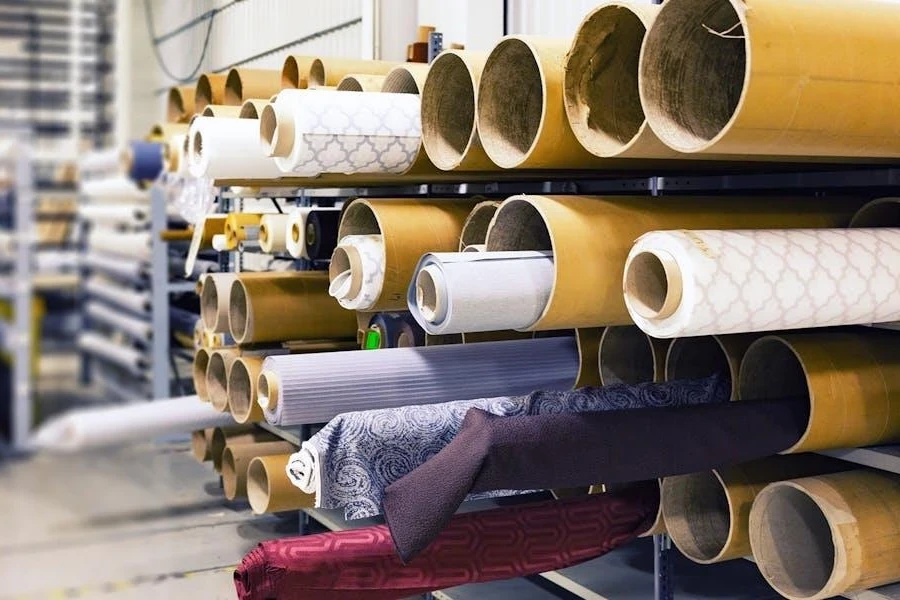
The first thing fashion businesses must do is have a clear idea of their fabric requirements. So, before brands meet with a supplier, they should think about the following factors:
Fabric type
Fabrics often come in two types: woven or knit. The fabric that businesses will need will depend on what garments they plan to make. Here’s a closer look at each type.
Woven fabric
These fabrics are opaque, resistant to wear and tear, and less likely to pill. Generally, the higher the thread count of woven fabrics, the better their quality and durability. Woven fabrics are perfect for denim jeans, dress pants, button-down shirts, and jackets.
Knitted fabric
Knitted fabrics are generally lightweight, comfortable, and easy to maintain. They resist wrinkles, which makes them a favorite choice for everyday wear. These fabrics are perfect for creating soft and cozy tops, bottoms, and undergarments—their stretchy quality is also excellent for activewear.
Material
Woven and knitted fabrics can be synthetic or natural, and some even blend the two.
- Natural fabrics are made from materials that nature provides, such as cotton, wool, and silk.
- Synthetic fabrics are made from artificial materials (usually from chemicals). They include rayon, polyester, and acrylic.
Specifications and quantity
Fashion businesses must also consider the fabric size they want, how much fabric they need, and the desired weight (which determines the product’s comfort and thickness). Brands can consult their garment mills on the perfect fabric width and quantity for their needs, as these factors also affect cutting and cost.
2. Know the types of fabric suppliers
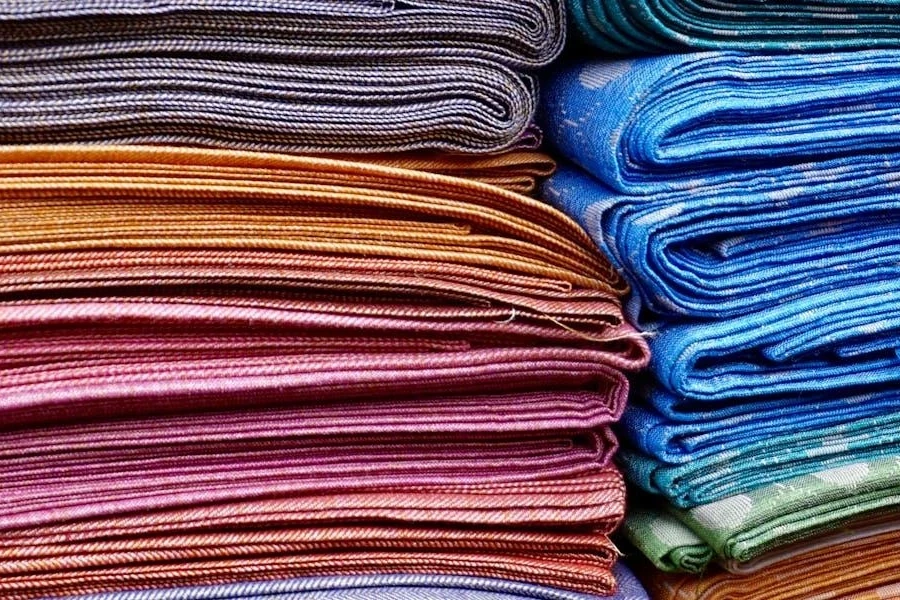
Now that businesses know what fabric they need, the next step is finding the right supplier. But before that, they should understand the different types of suppliers with whom they can strike a deal. Each fabric supplier offers incredible benefits, but the choice comes down to the brand’s manufacturing project.
Here’s a look at the different types of fabric suppliers:
- Retailers: Standard fabric stores where brands can order low minimums of available stock.
- Wholesalers: Bigger retailers with larger quantities of available stock.
- Jobbers: Like a wholesaler, but focuses on selling discontinued fabrics.
- Traders: These people buy and sell different types of fabrics based on a buyer’s instructions, often earning a commission for their work.
- Converters: These suppliers purchase greige goods from various mills for dye, prints, or finish customization. They usually offer a wide range of products and can handle customizations according to the buyer’s needs.
- Fabric sourcing agents: They connect buyers with multiple fabric suppliers. They offer work on commission and can help secure better deals due to their strong relationships with mills.
- Factory: A full-service operation combining mill and factory capabilities. Factories typically work with major brands, don’t share product details online, and require a high minimum order quantity.
Here’s a quick summary of what fashion businesses can expect from these fabric suppliers.
| Fabric supplier | Product diversity | MOQ | Fabric in stock? | Best for |
| Retailer | High | None | Yes | – DIY projects – A few yards of fabric – Private use |
| Wholesaler / Jobber | Medium | Yes (but very low) | Yes | – Small businesses – Up to 100 yards of fabric or more |
| Traders | High | Yes | No | – Medium-sized clothing line – More than 1,000 yards of fabric |
| Converter | High | Yes | Yes (but a minimal quantity) | – Small to medium-sized businesses – More than 3,000 yards of fabric – International brands |
| Fabric sourcing agent | High | Yes | No | – Garment factories – More than 1,000 yards of fabric – Local and international brands |
| Factory | Depends on the factory | Yes (usually very high) | Yes (but also limited) | – International brands – Huge fabric quantities – Garment factories |
3. Know the right place to source fabric from suppliers
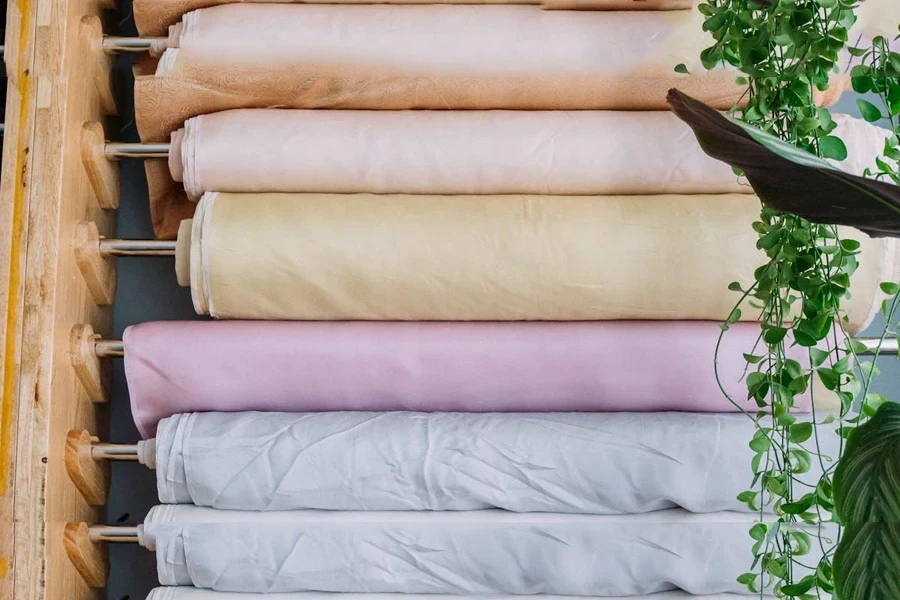
Businesses can find fabric vendors from trade shows and online marketplaces. While fabric trade shows let them see and feel the materials firsthand, online suppliers can send swatches or samples for review (often at a small fee).
Sourcing fabric at trade shows
While visiting fabric trade shows can be overwhelming, businesses can conquer the endless rows of supplier booths with a simple strategy. They can research the fabric mills and list their top 10. A more focused approach leaves time to discover even more fabric suppliers. Click here for a list of textile trade shows in the United States.
Sourcing fabric online
Can’t make it to trade shows? Businesses can search for fabric suppliers online instead. They will find various local and international suppliers offering wholesale and made-to-order fabrics. Brands can find these suppliers through Google or sourcing platforms like Chovm.com, Taiwan Trade, and Global Sources.
7 questions to ask potential fabric suppliers before closing the deal
After finding and choosing the perfect supplier to work with, it’s time to ask them some questions. Here are eight questions brands must ask before entering the textile industry.
1. Do you have what I need? / What is the fabric article or item number?
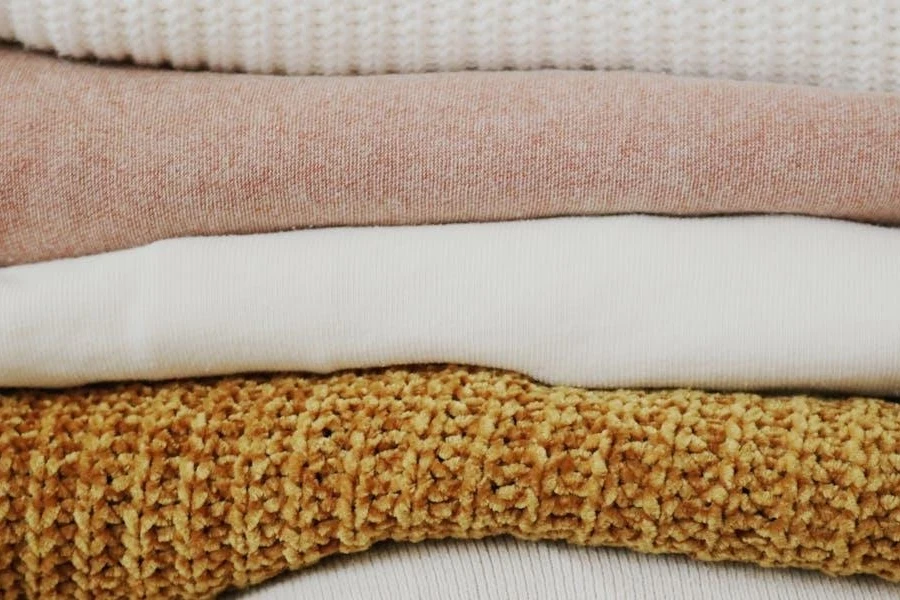
There’s no point doing business with a supplier that doesn’t have the required fabric. Brands should give the supplier details about their fabric requirements, including content, construction, post-finishing, weight, and testing requirements.
If the supplier has what the brand wants, they should ask for the fabric article or item number. Fabric suppliers assign article numbers to each fabric type they sell, just like product numbers for items in an online store. Businesses must keep this number in mind because they need it when ordering samples or bulk fabric yardage.
2. What is the fabric width (total and cuttable)?
Fabric width measures the width of the fabric from both edges on the roll. When getting fabric, the supplier should give two measurements, including the total and cuttable width (if they don’t, be sure to ask).
The total width includes the entire fabric, but the edges may be uneven or damaged during production or transport. That’s why it’s better to use cuttable width as the go-to measurement since it shows precisely how much fabric is usable.
3. How much does the fabric cost?
While this may seem obvious, fashion brands must know the supplier’s fabric units. Will they charge per kilogram, per meter, or per yard? Will they require a surcharge if the brand orders below the MOQ or MCQ? Then, brands should check if it matches how much they are willing to spend per unit.
4. What is the minimum order quantity?

Most suppliers have a minimum order quantity, so businesses must ask them before ordering. It helps find suppliers who can meet production needs without forcing brands to buy more than they need or can afford.
5. How long is the fabric delivery lead time?
How many days will it take for the fabric to arrive? Suppliers with long lead times can slow production schedules. So, brands must ensure they are working with suppliers that match their production timeline, allowing them to meet deadlines.
6. Where is the country or origin?
Fashion brands must also know the supplier’s COO (country of origin), as they will include the information on their garment’s label. It can also impact the fabric’s cost, especially if businesses will have to import from another country.
7. What are the payment terms?
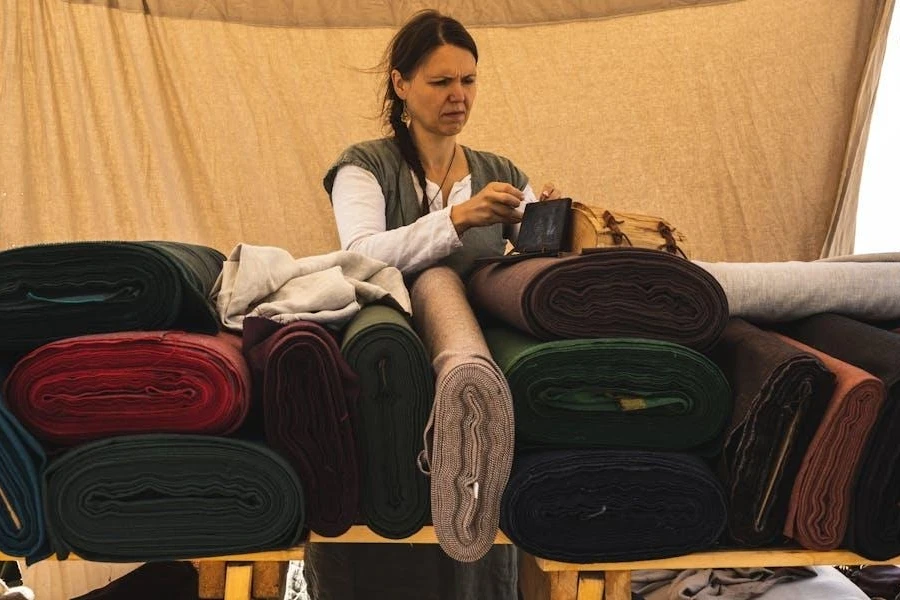
What kind of payment terms will the supplier want? Will they require a telegraphic transfer payment? Or will they need deposits or payments in advance? Fashion brands must also ask which party will be responsible for insurance, shipping, and tariffs.
In conclusion
Fabric sourcing is an overwhelming but necessary aspect of any successful fashion brand. It becomes easier when businesses have their requirements and know what kind of fabric supplier they want and where to find them. However, they must still avoid scams and terrible offers disguised as hidden gems.
Fashion brands should refrain from sourcing fabric from unreliable online vendors, questionable overseas suppliers, flea markets, or unverified wholesalers. Chovm.com offers a variety of verified and reliable fabric suppliers around the world. Fashion businesses can rest easy knowing that they can choose from thousands of manufacturers to meet their textile needs.





 Afrikaans
Afrikaans አማርኛ
አማርኛ العربية
العربية বাংলা
বাংলা Nederlands
Nederlands English
English Français
Français Deutsch
Deutsch हिन्दी
हिन्दी Bahasa Indonesia
Bahasa Indonesia Italiano
Italiano 日本語
日本語 한국어
한국어 Bahasa Melayu
Bahasa Melayu മലയാളം
മലയാളം پښتو
پښتو فارسی
فارسی Polski
Polski Português
Português Русский
Русский Español
Español Kiswahili
Kiswahili ไทย
ไทย Türkçe
Türkçe اردو
اردو Tiếng Việt
Tiếng Việt isiXhosa
isiXhosa Zulu
Zulu